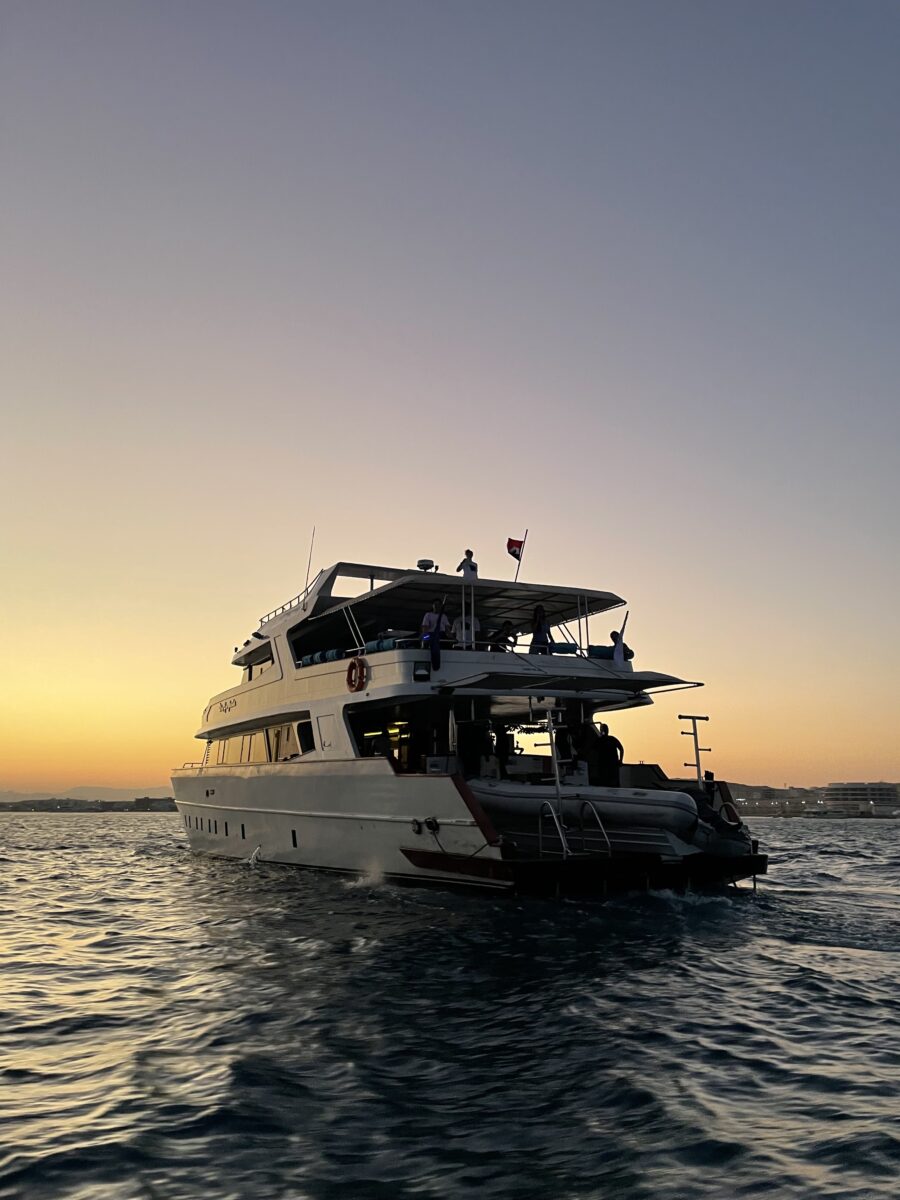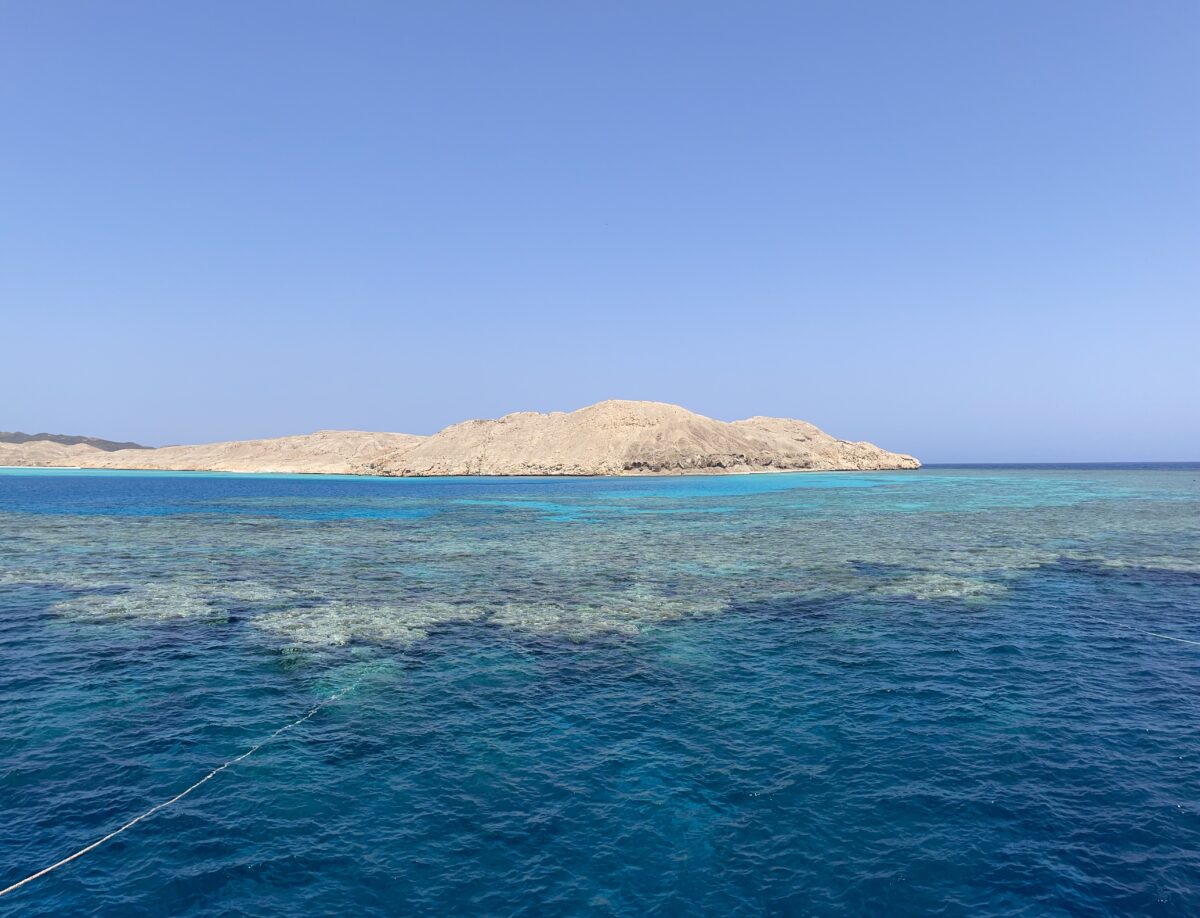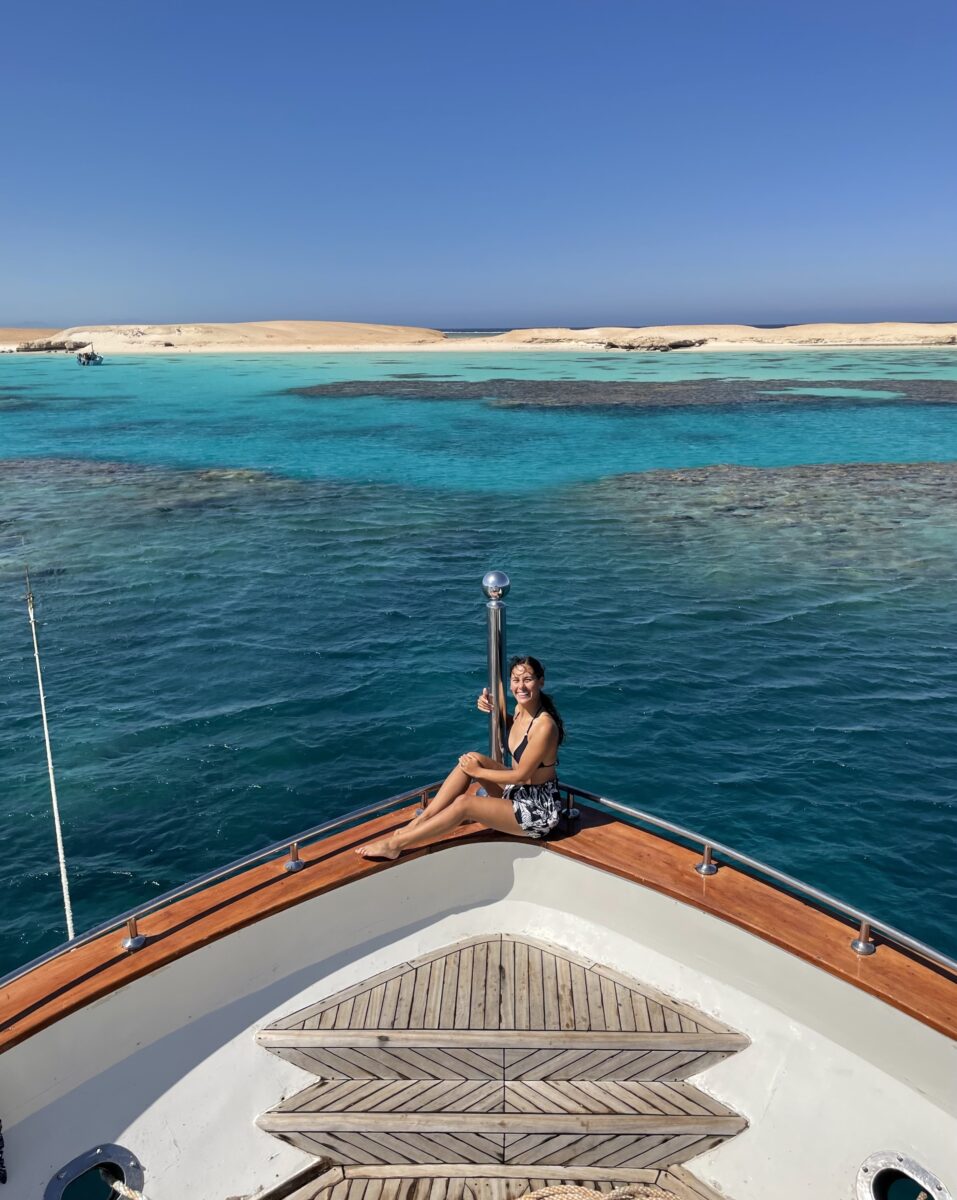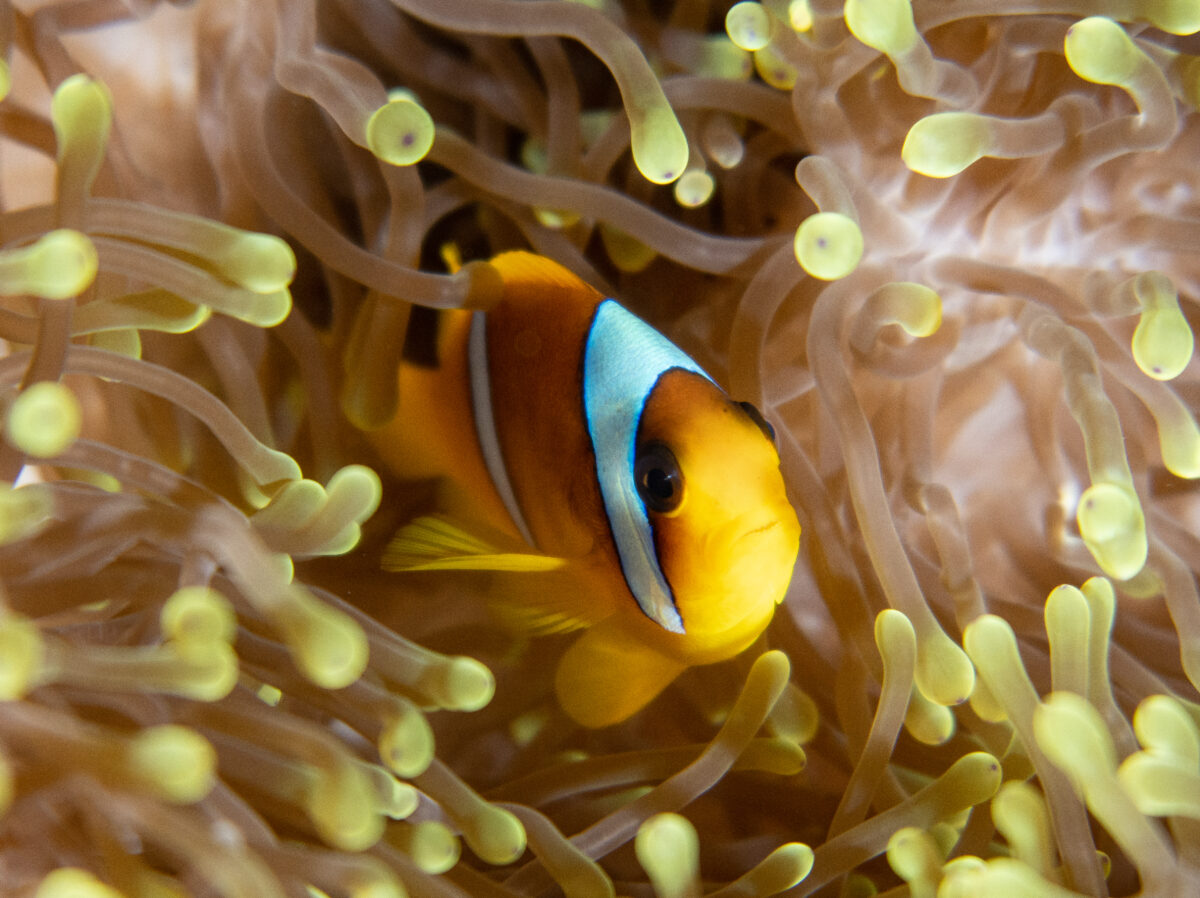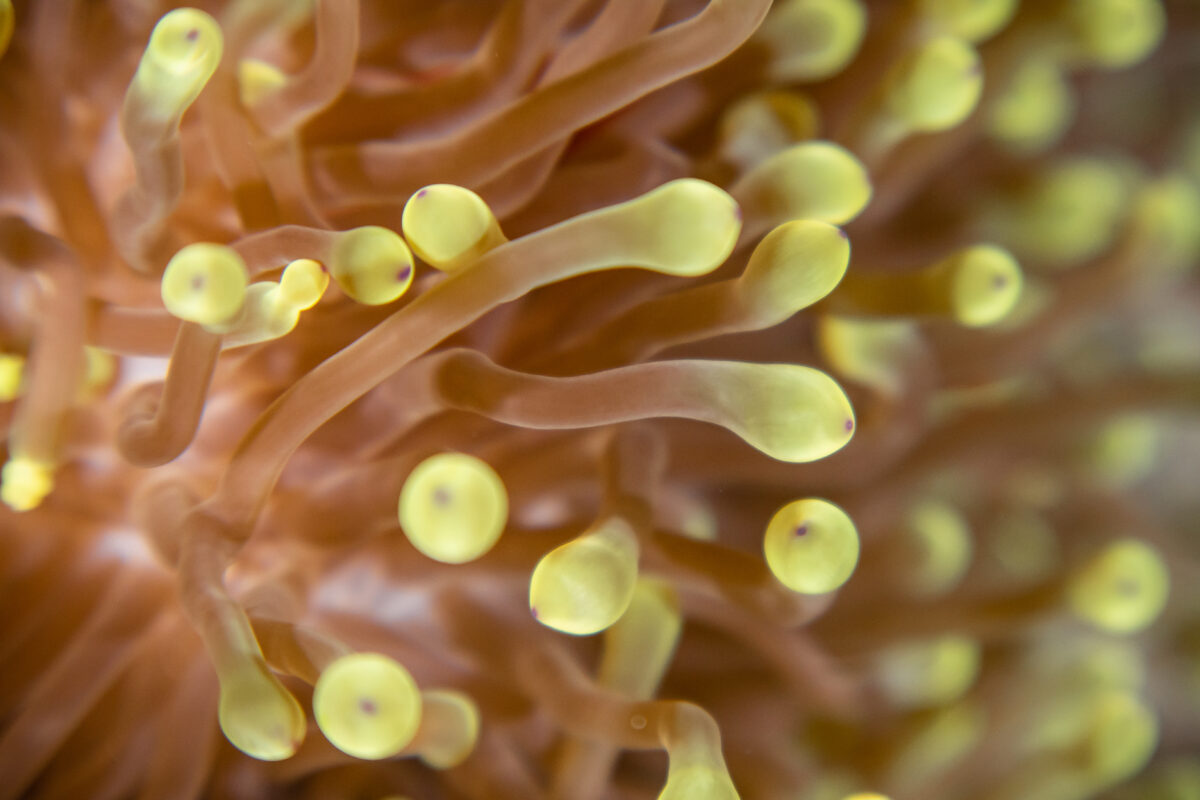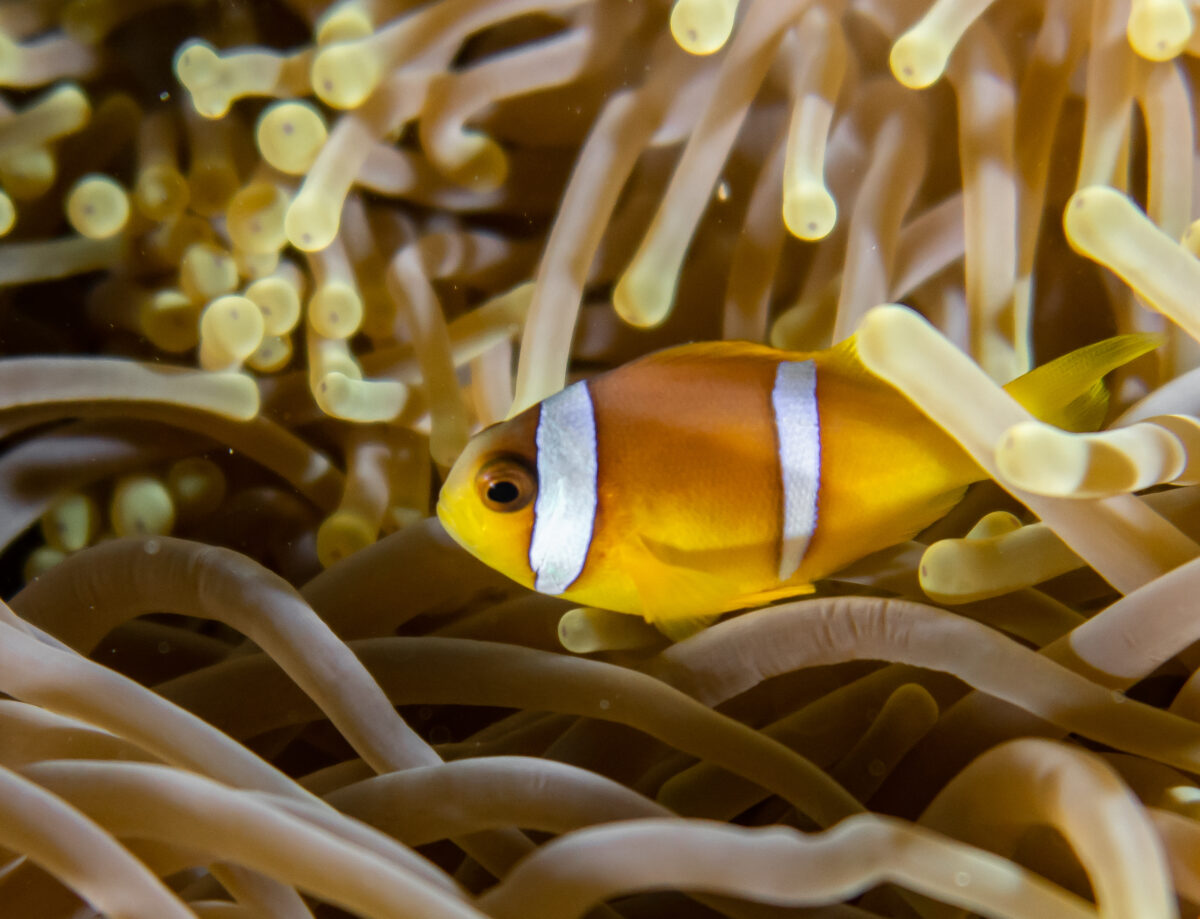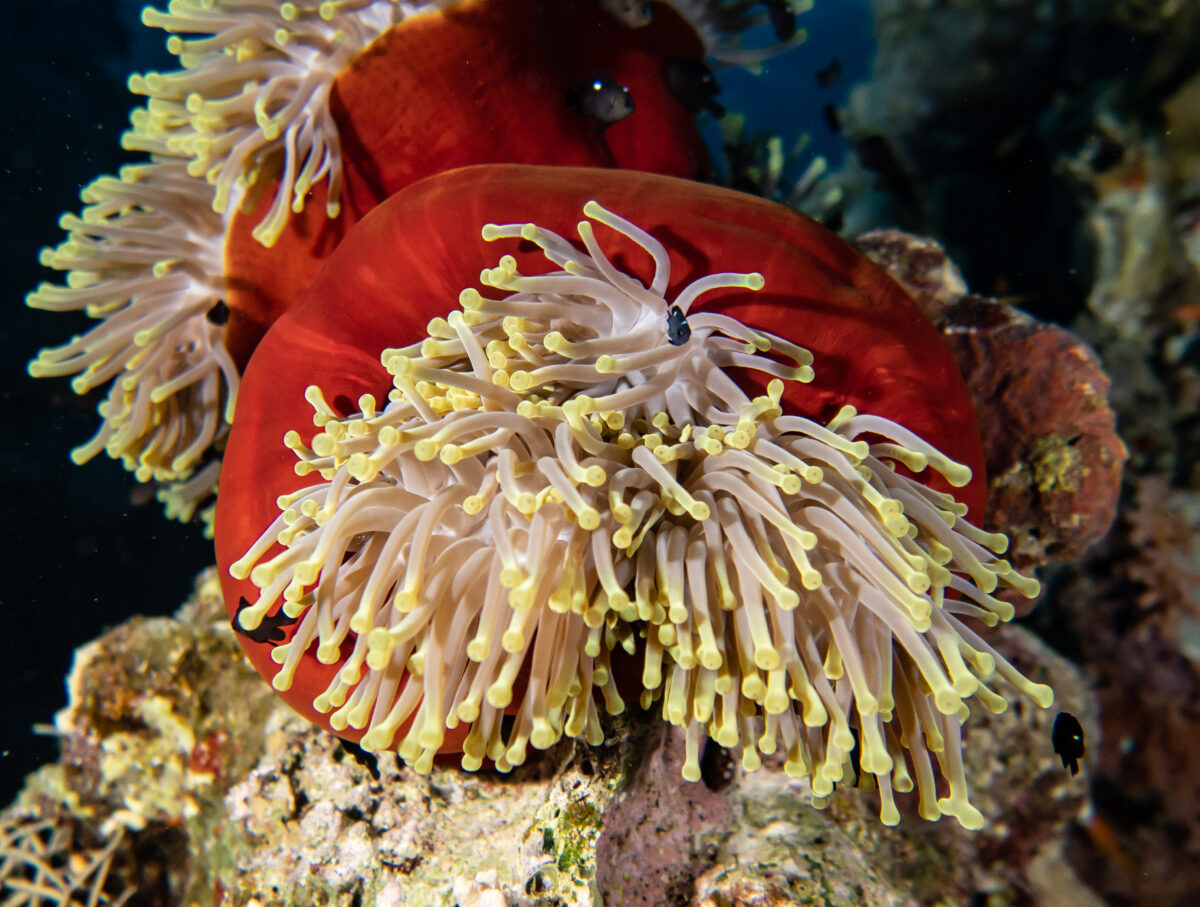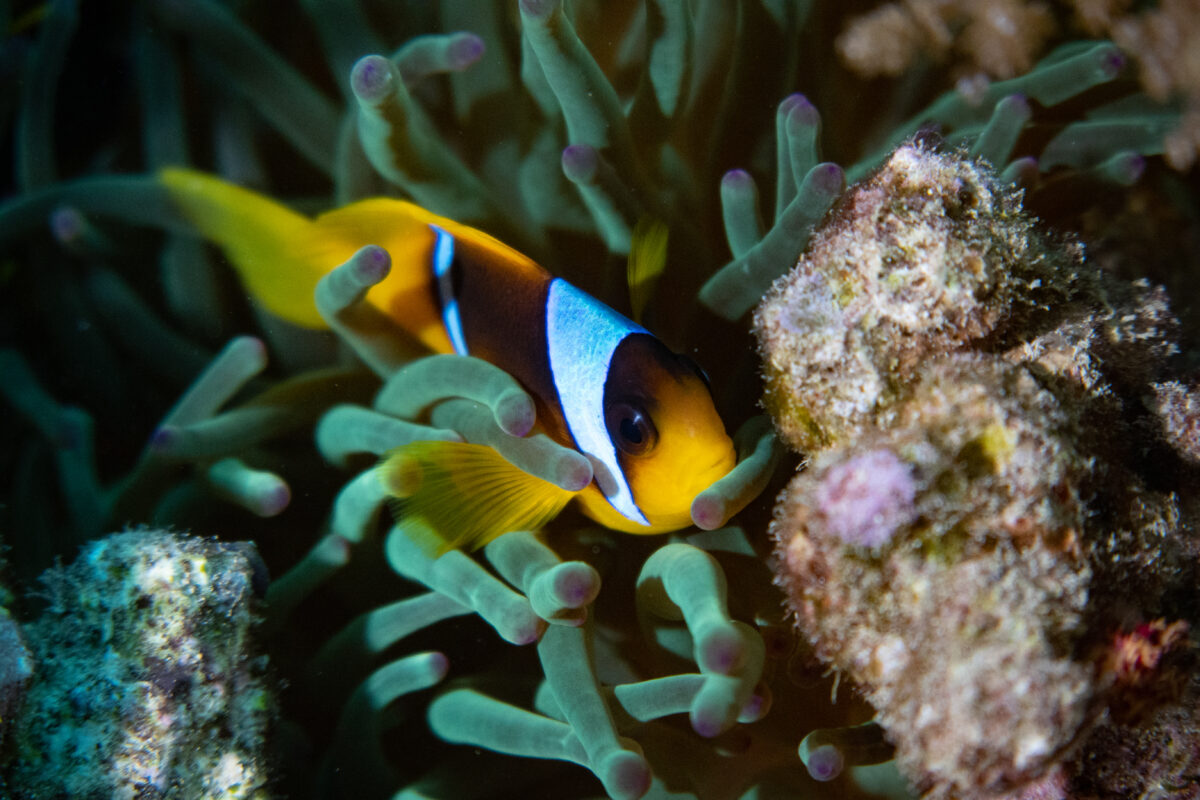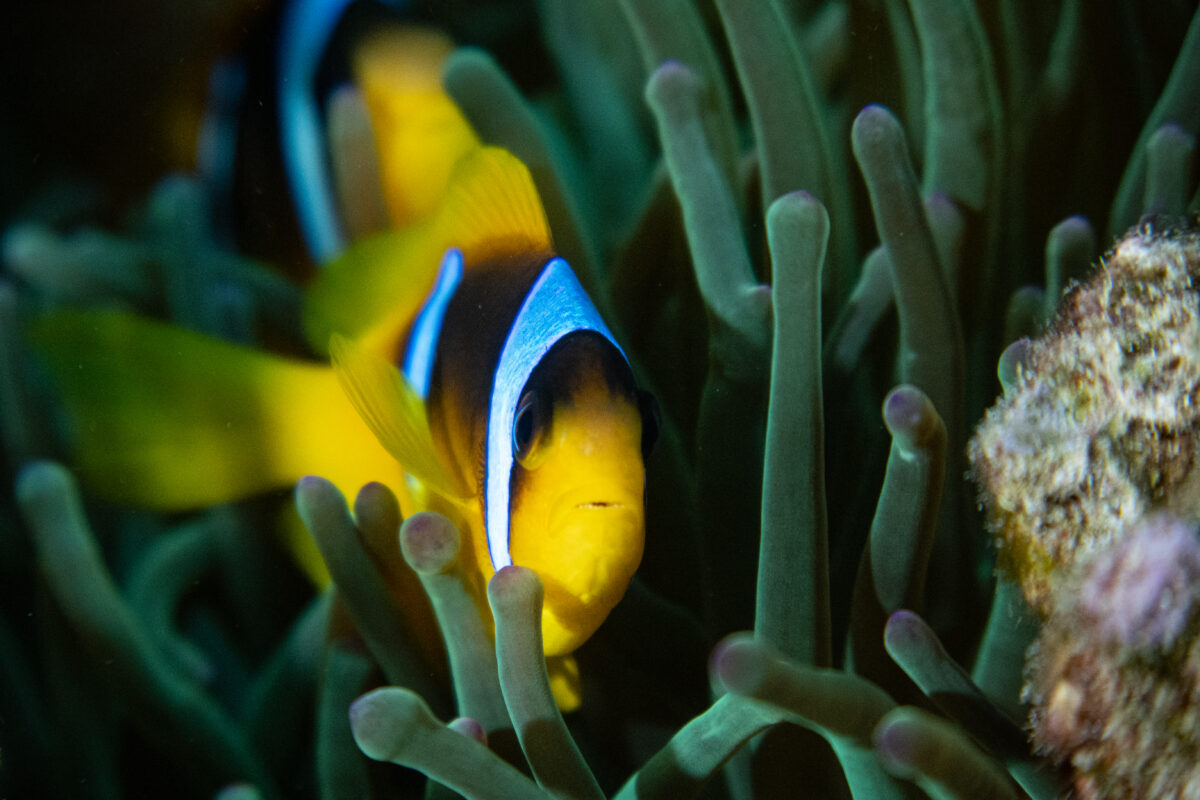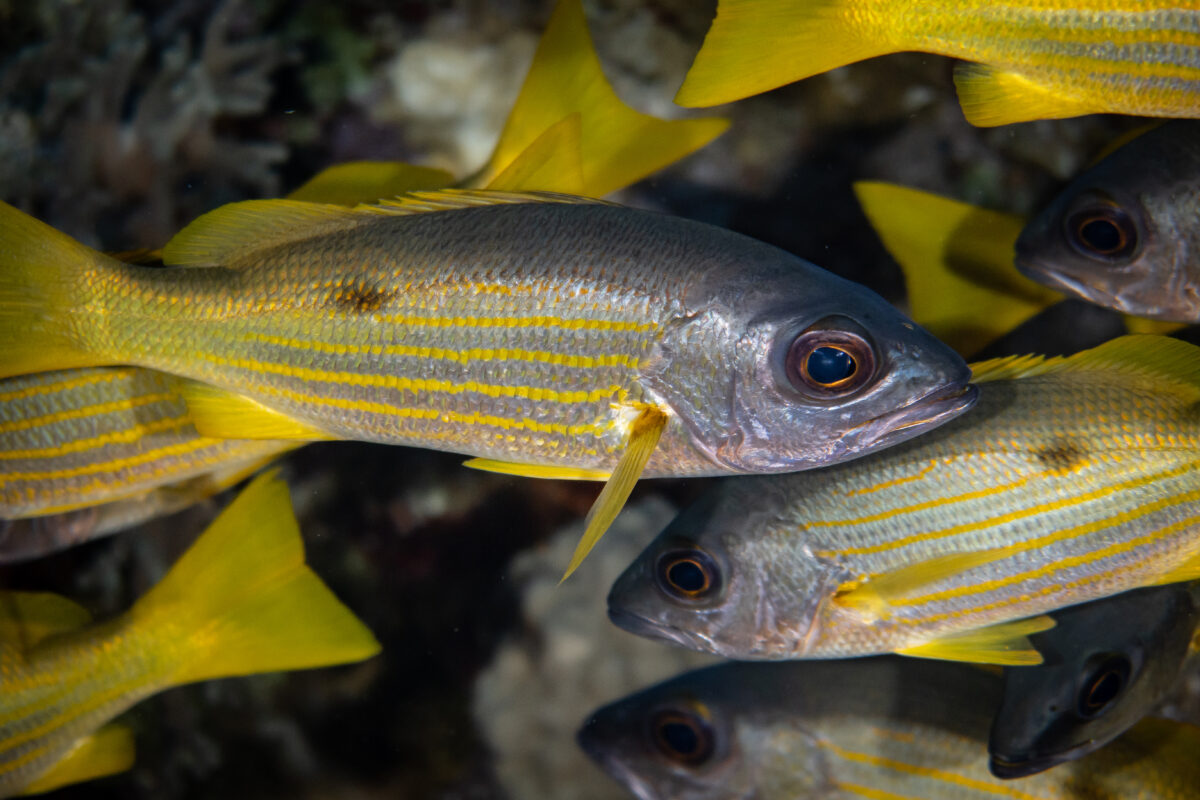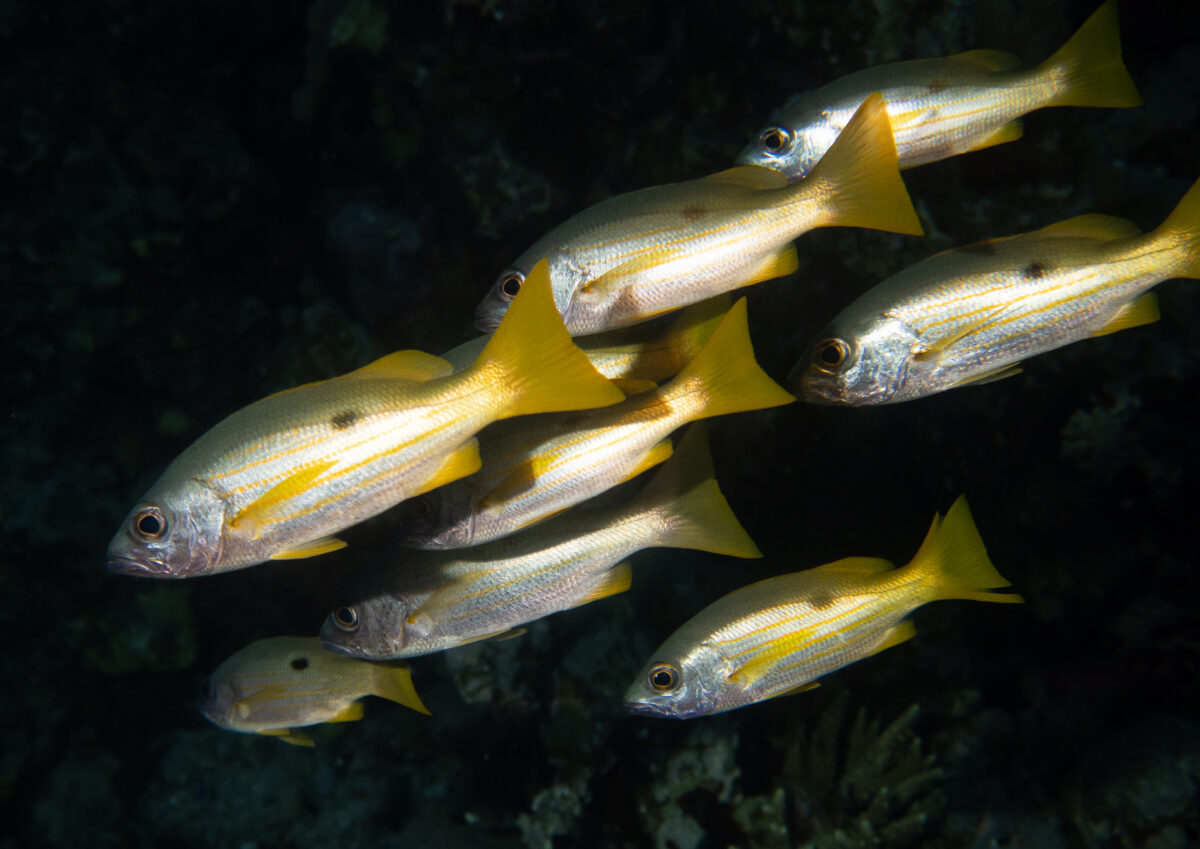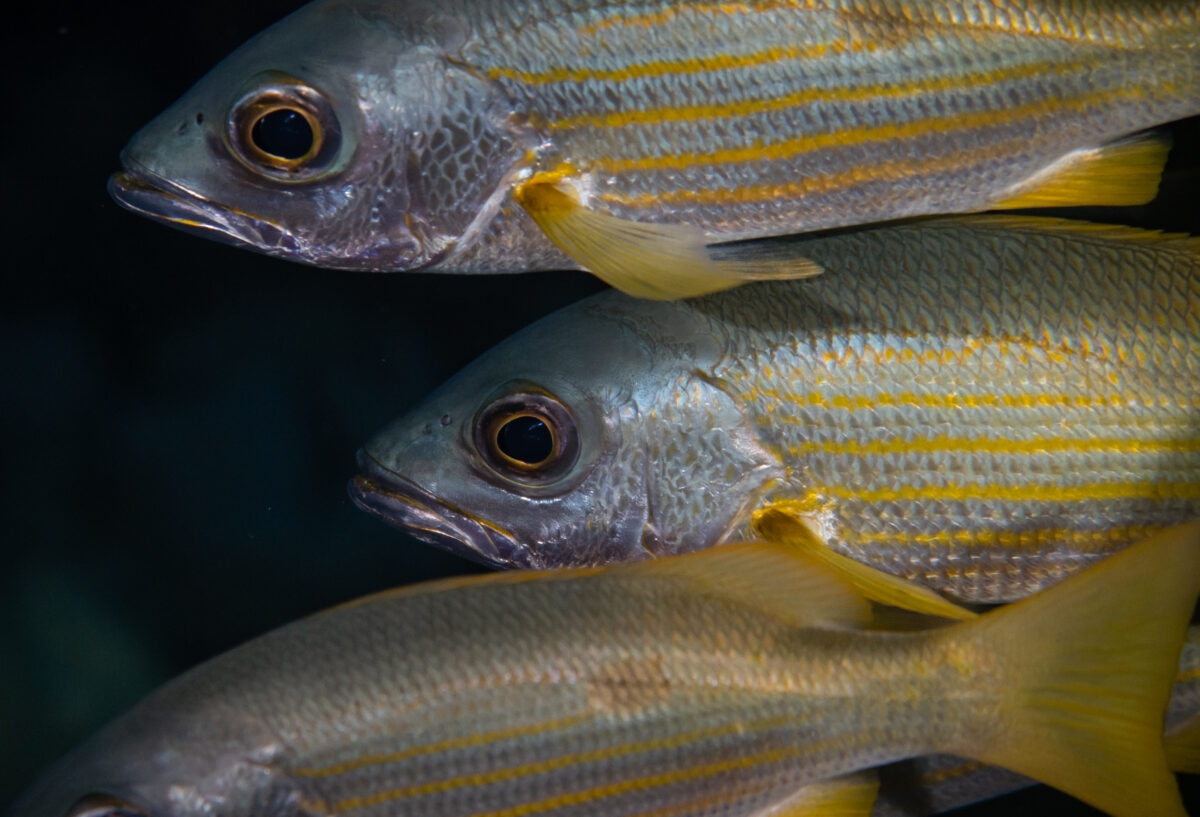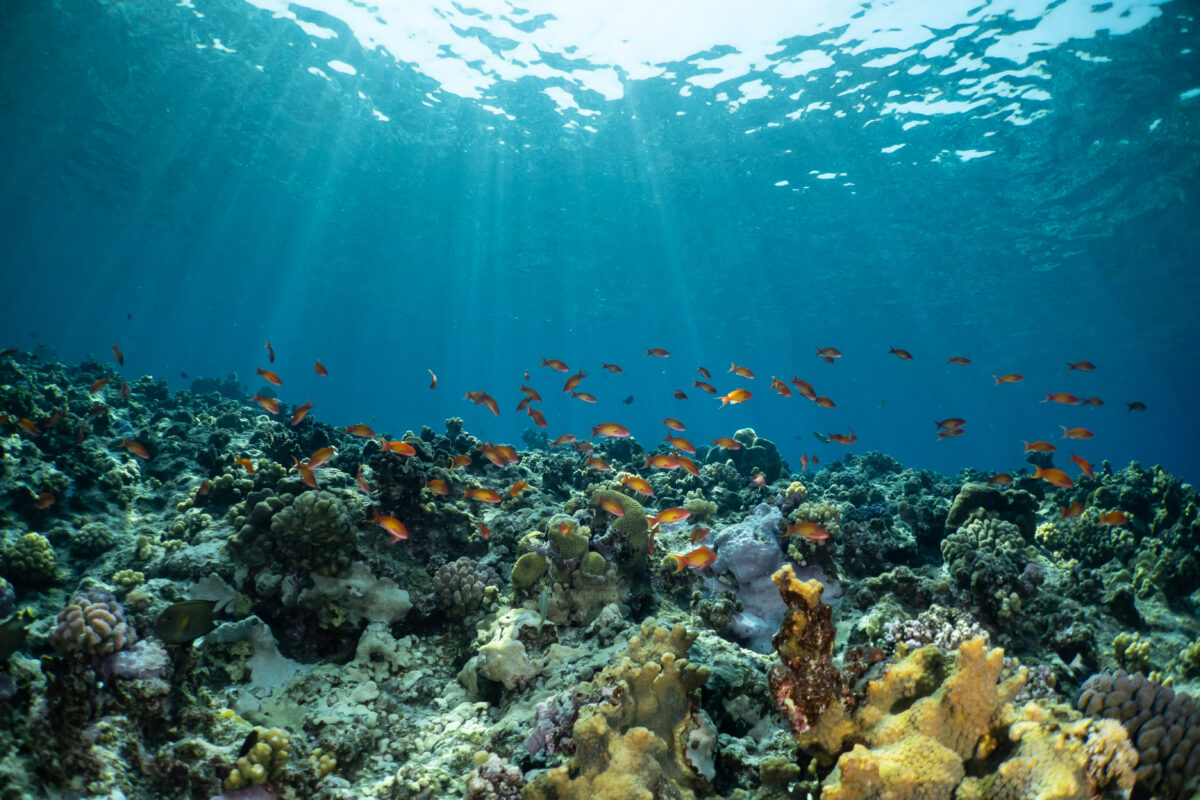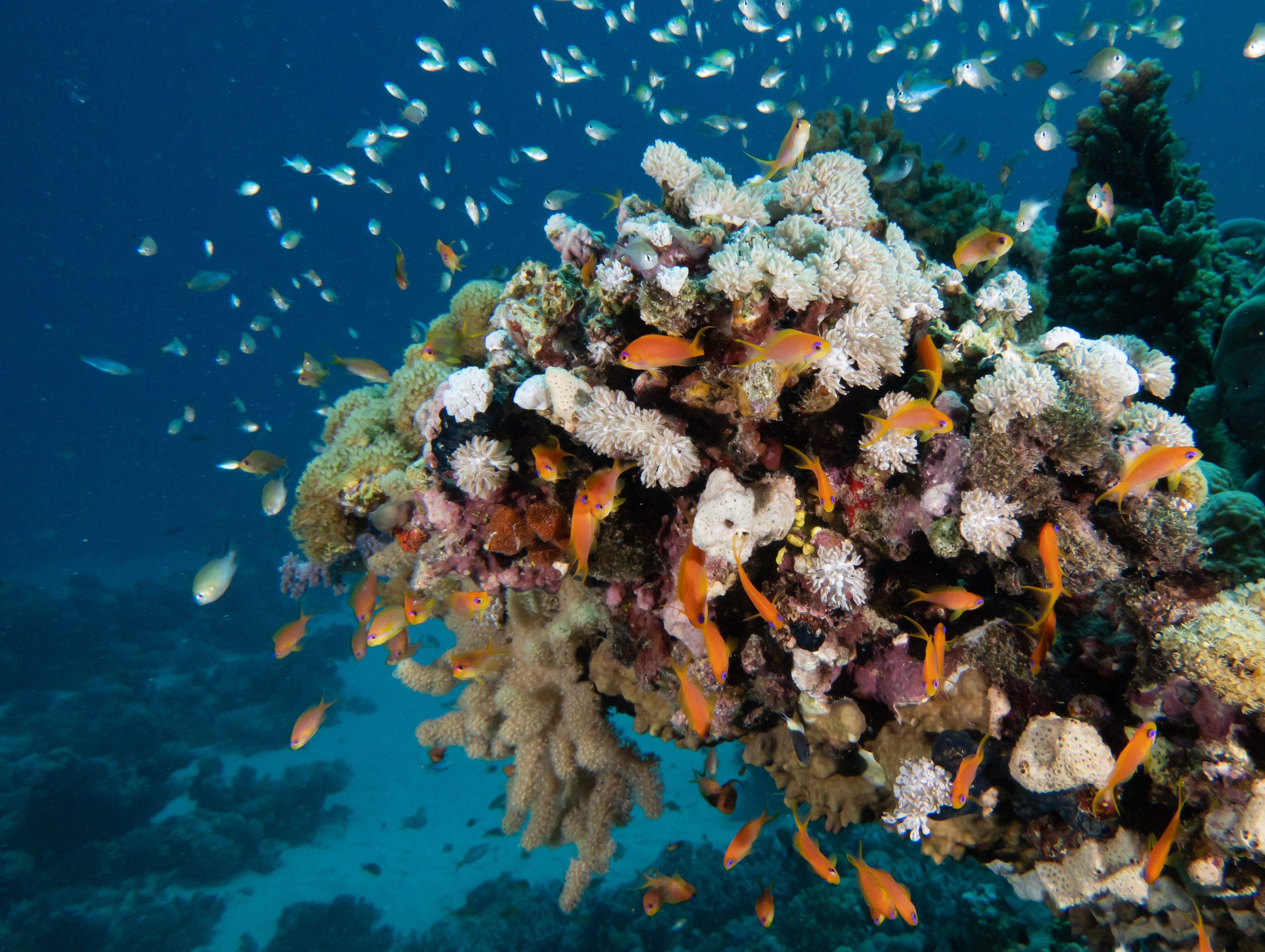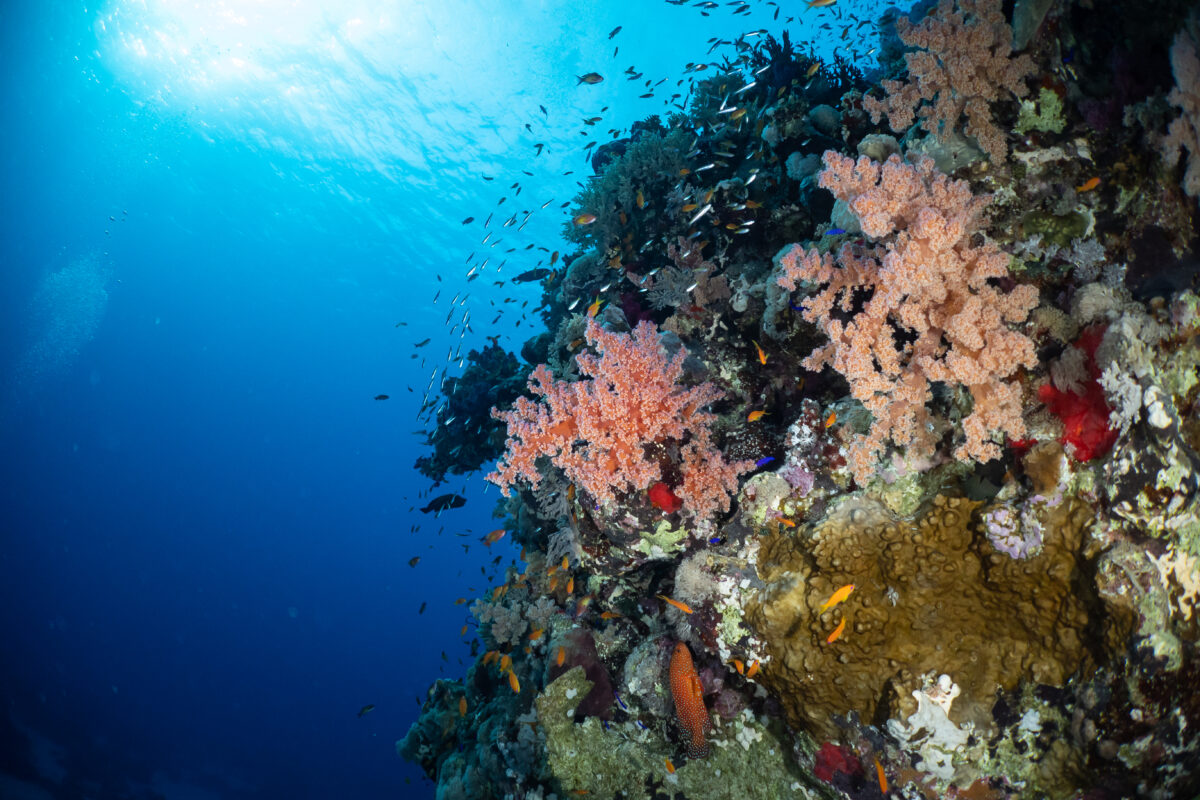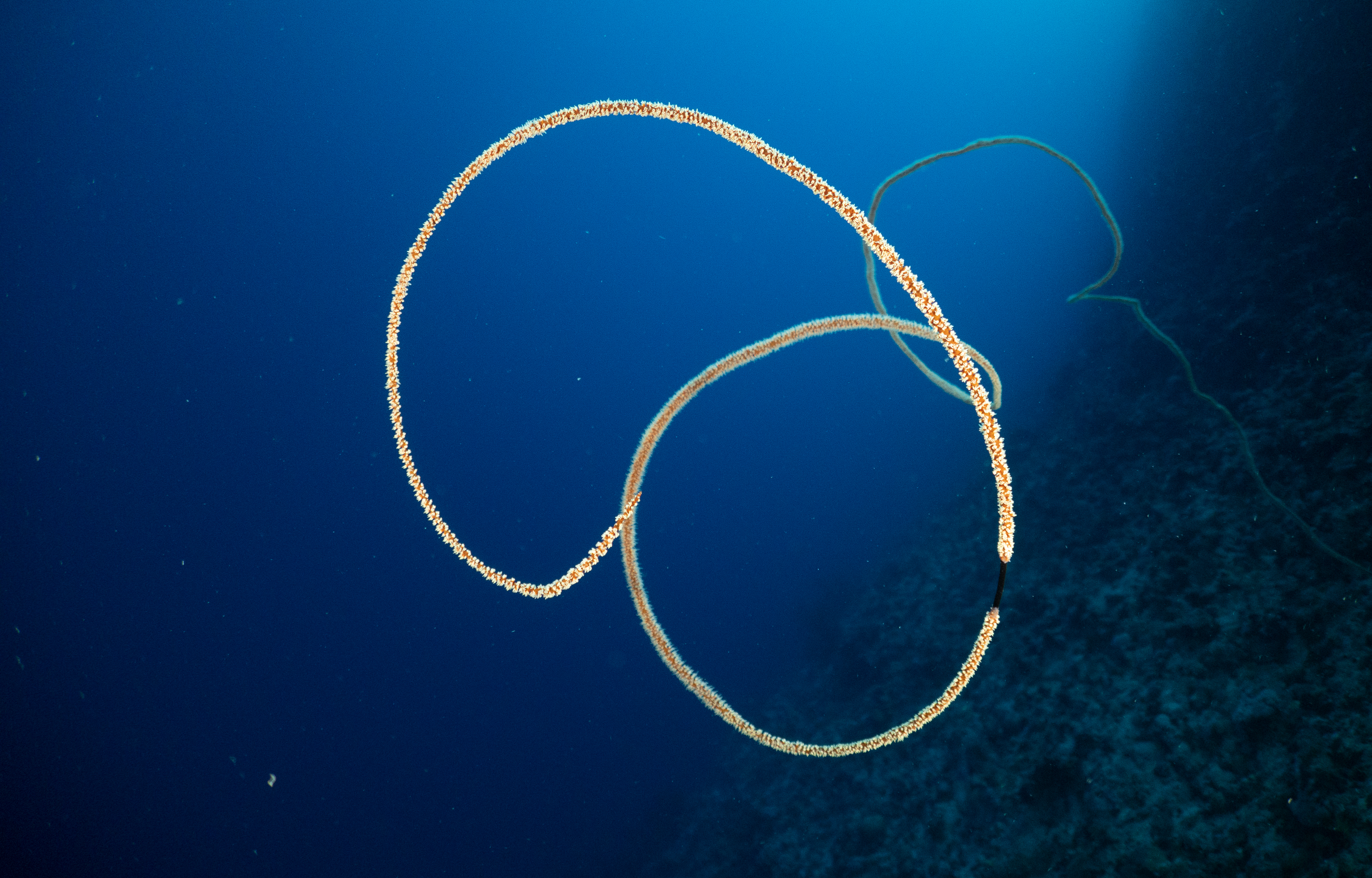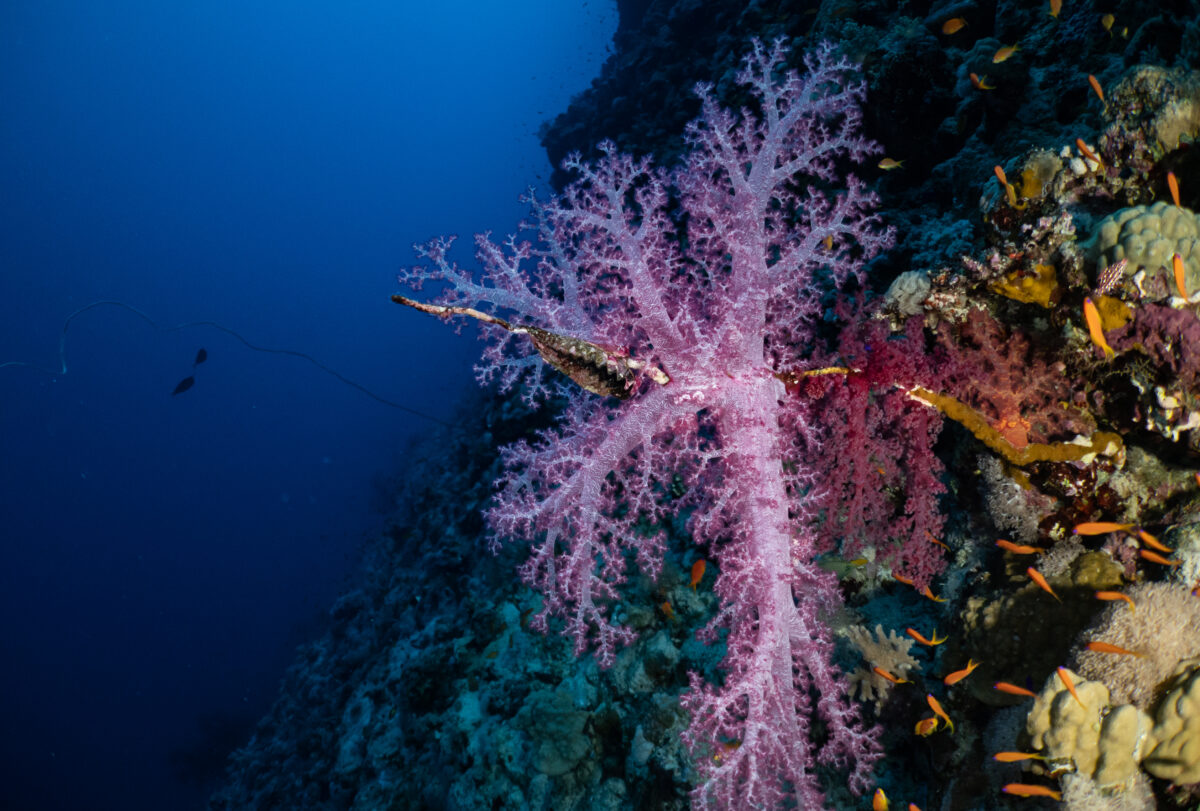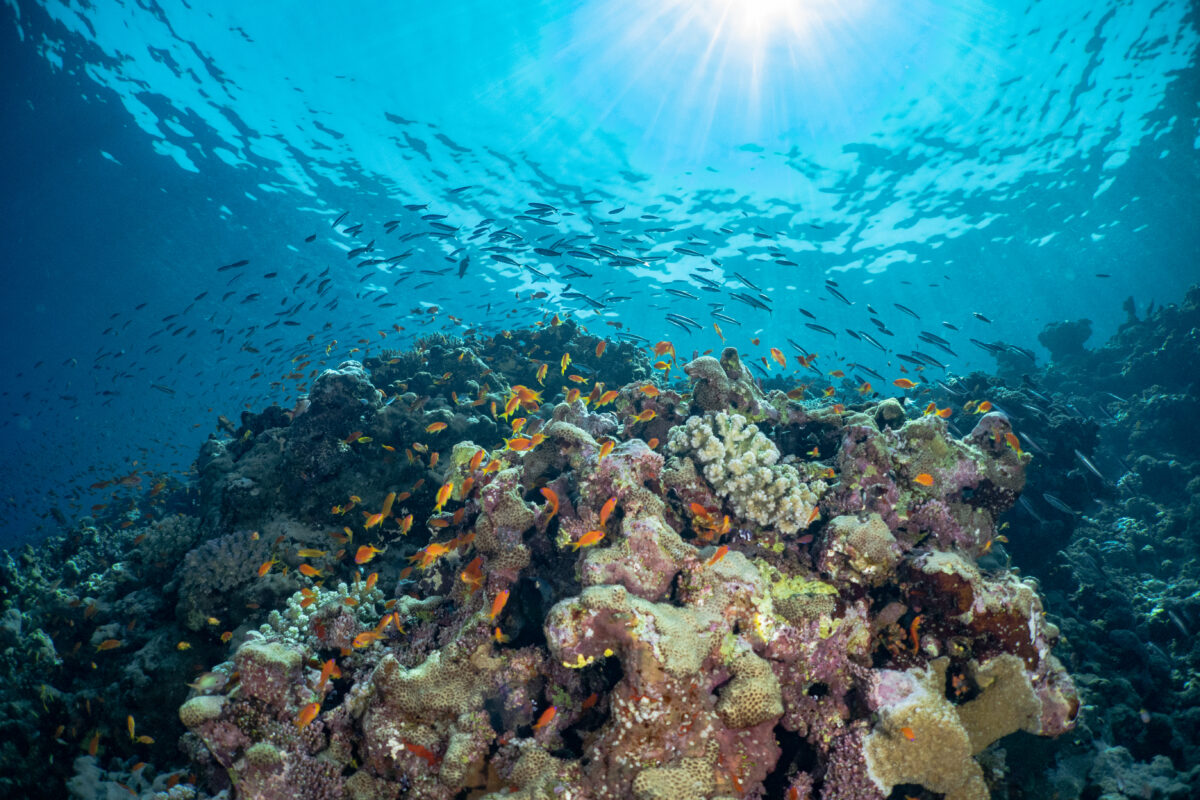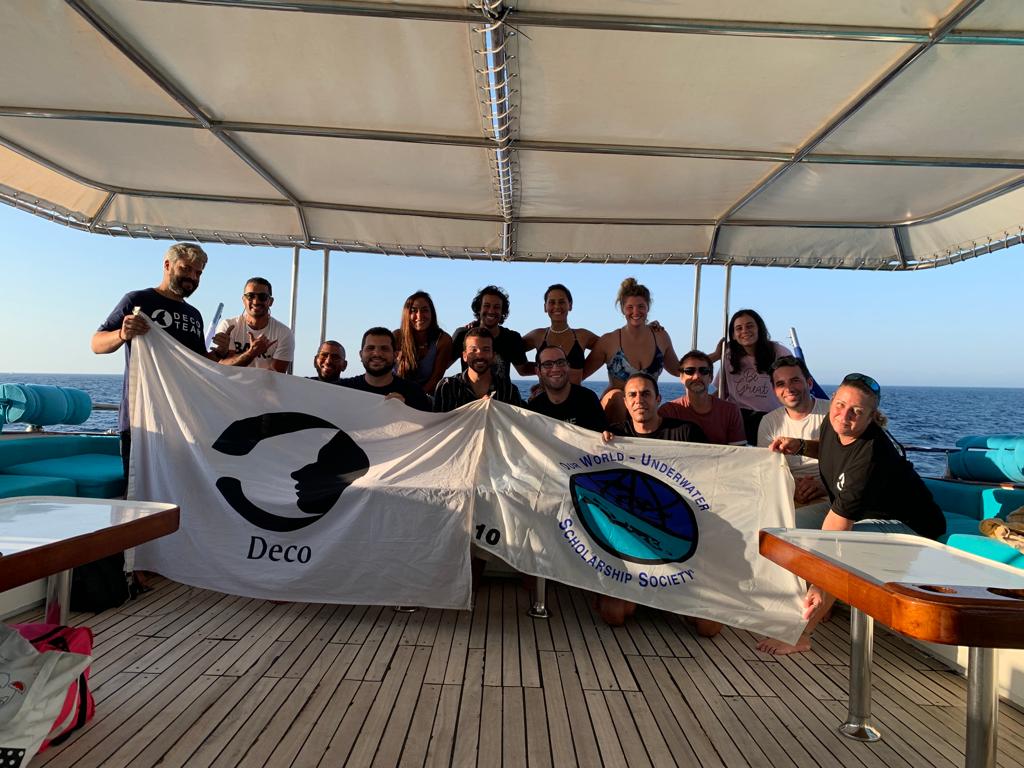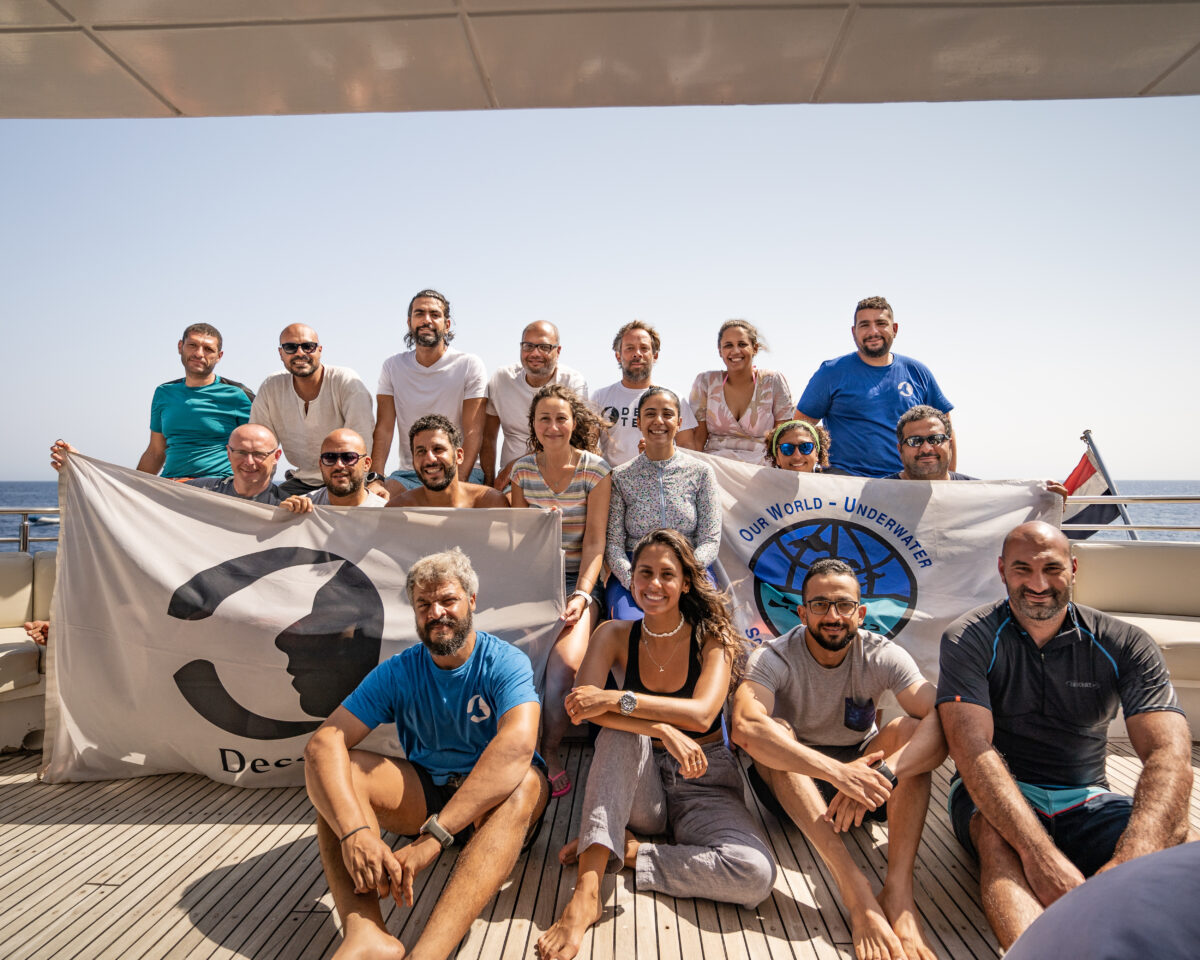My time with Red Sea Diving Safari ended with an exciting three hour van ride from Marsa Shagra to Hurghada together with Sarah O’Gorman and Ellie from Baladi Watch. In the van with us we had the little pup I found a few weeks ago and two of Baladi Watch’s bigger dogs Charlie and Coco. Once we got their microchips and vaccines administered it was time to say goodbye (with lots of tears shed), grab my bags and leave land behind for three days at sea onboard the “MV Dive Hurghada” and the “MV Betelgueser”. I joined Deco Divers for a liveaboard trip to the famous Abu Nahas wrecks, followed by a journey to the Deep South of Egypt to practice my photography a little more. Ahmed Mamdouh, also known as “Sharky”, invited me to join these trips after hearing about the scholarship through Sarah. Sharky is the owner and Director of Deco Divers, and as his name suggests an avid shark conservationist. He also happened to be one of Cristina Zenato’s former students (I will be visiting her for a shark handling course in February) – what a small world! While offering liveaboard experiences to the Red Sea’s most beautiful dive sites, Deco Divers also works tirelessly to promote responsible diving behavior through educational workshops on marine life and restoration activities.
Given my academic background in human geography, political ecology and conservation science, both of these locations offered a hands-on opportunity to critically examine a few of the vital issues arising at the intersection between people and oceans in the Red Sea. From the Suez Canal that links it to the Mediterranean, to the straits of the Bab al Mandab that connect it to the Indian Ocean, the Red Sea is a vital artery for the world economy, home to some of the world’s most biodiverse coral reefs and witness to complex political tensions. The wrecks of Abu Nahas in particular provide a window not only into the regions colonial past, but also represent the formation of new reef ecosystems in present, bringing with them the challenge of preserving both marine life and underwater cultural heritage in the future. The waters of the Deep South of Egypt on the other hand, border the contested Halaib Triangle, a region in constant motion and of great significance for both Egypt and Sudan. Ultimately issues such as the regulation of tourism, the management of fishing, the conservation of fragile coral reefs, and the extraction of seabed resources all manifest visibly at these two sites, and as such it was nothing short of exciting to be able to spend time there!
Our wreck dives turned out very differently than expected! We were met with three days of strong winds, high waves and subsequently bad visibility in the majority of dive sites, meaning that I ended up focusing on macro photography instead of capturing the wreck itself. I also had to sit out several dives as my right ear didn’t equalise and started becoming very painful.
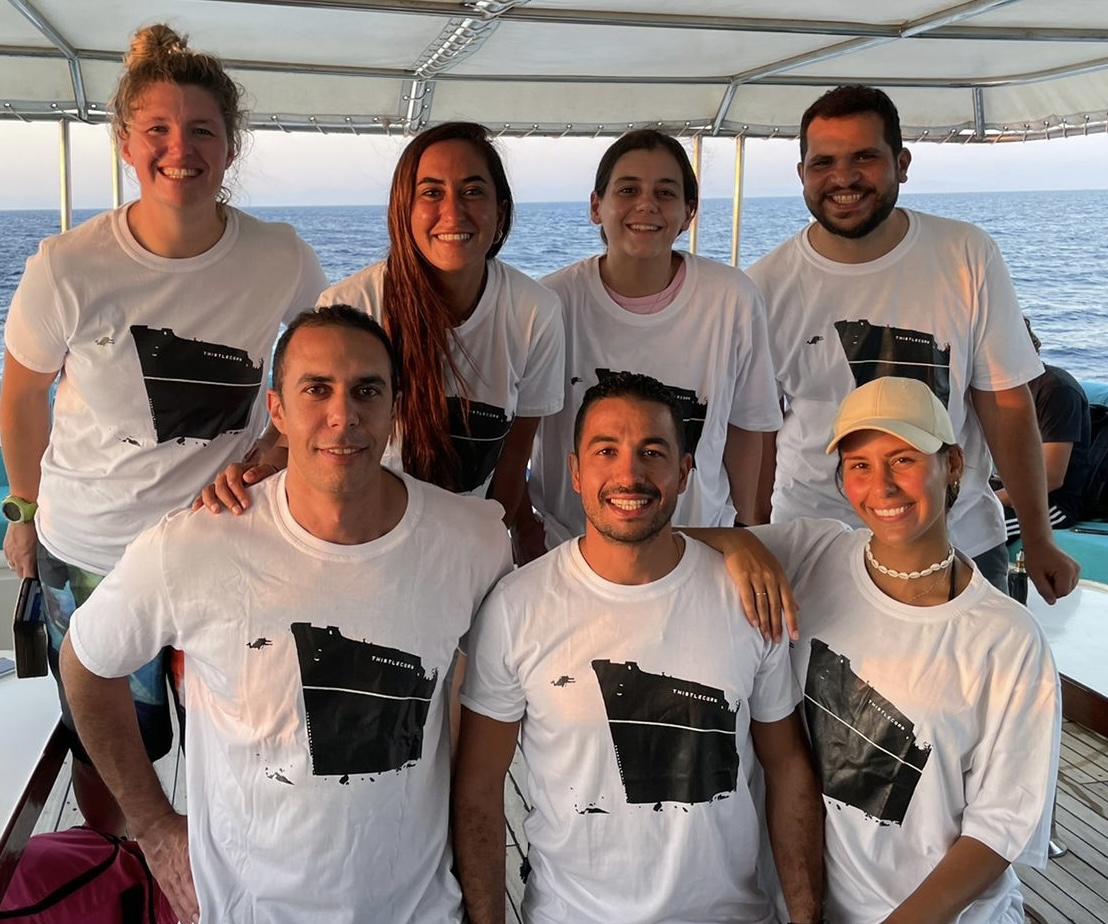
Happy faces after our dive to the SS Thistlegorm despite the bad visibility during the day. Photo by Omar Saaba.
Home to the most pristine reefs in the Egyptian Red Sea, the dive sites of the Deep South of Egypt just North of the border to Sudan – such as St John’s, Zabargad and Rocky Island – are all accessible only by liveaboard. St John’s ranges from fairly easy diving to much more dramatic drop-offs and currents, home to the richest coral gardens in the Red Sea, spectacular gorgonian forests and some of the most plentiful and biodiverse wildlife in the region including sharks and large schools of pelagic fish such as jacks and tuna. Further out to sea, the strong currents around Rocky Island and its neighbour, Zabargad, allow experienced divers to experience some thrilling drift dives, with regular sightings of manta, hammerheads, silvertips and dolphins. The long chain of reefs known as Fury Shoal, on the other hand offers dramatic drop offs, some wrecks and stunning plateaus.
Liveaboards are all about completely immersing yourself in the ocean and its marine life, accessing the most incredible dive sites the destination has to offer and maximising diving time. On a liveaboard there’s no traipsing back and forth with all your gear in tow between a dive shop and your day boat. It’s all there, ready to go, with boats customized for easy donning of tanks and crew there to assist you all the way.
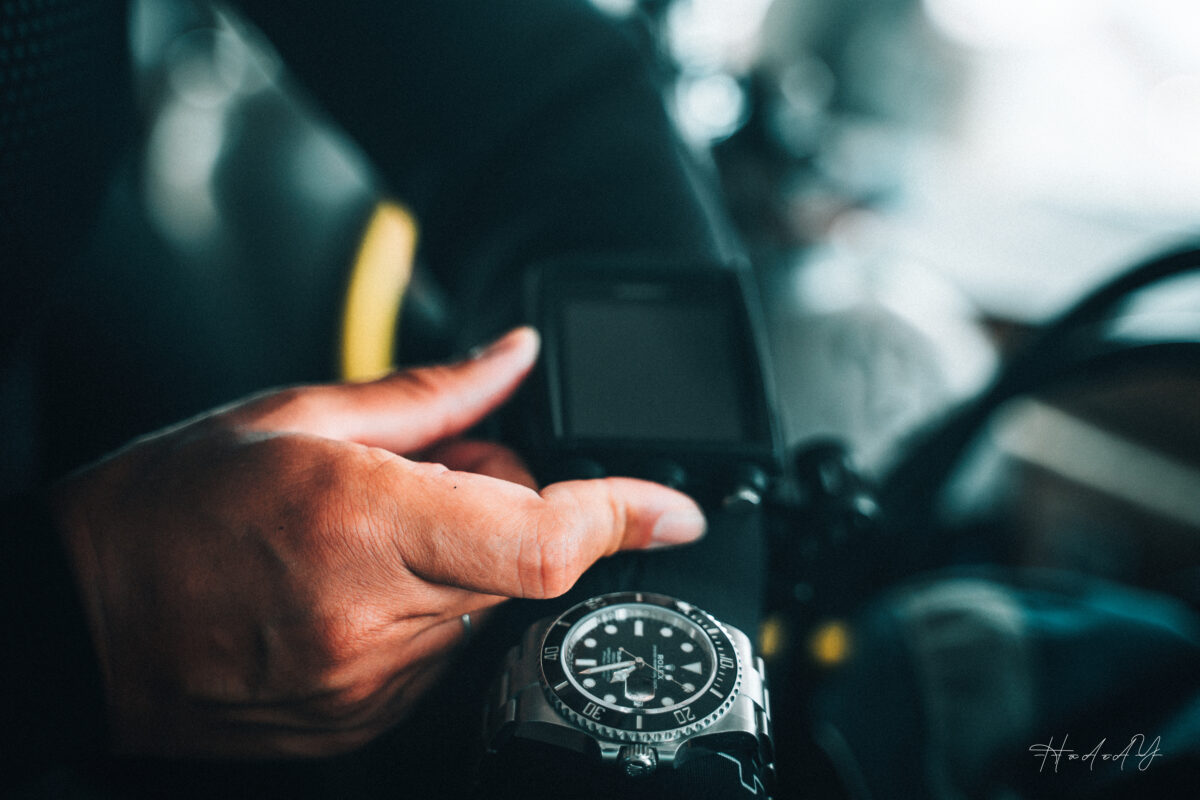
Setting my dive computer to Nitrox. Photo by Ahmed Hadedy. 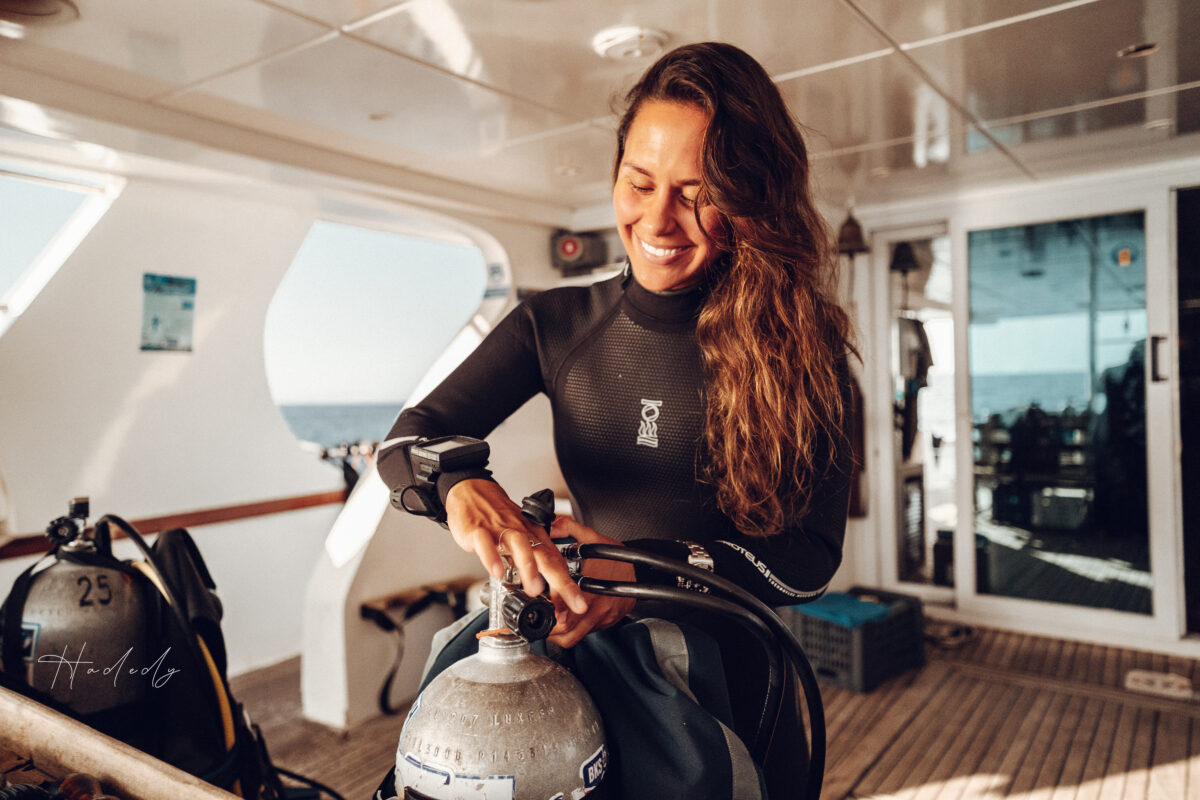
Setting up my equipment. Photo by Ahmed Hadedy. 
Ready to dive! Photo by Ahmed Hadedy.
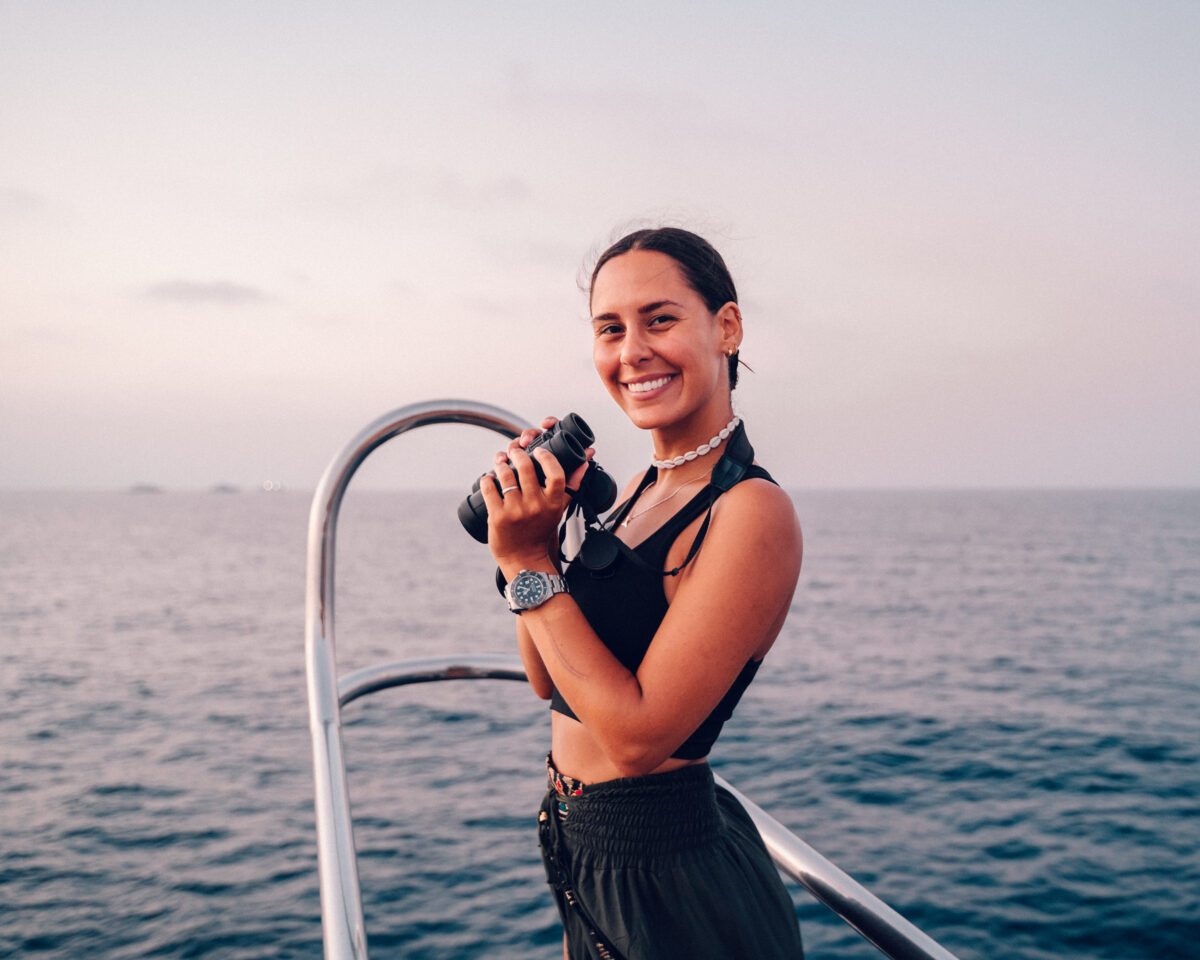
Searching for dolphins! Photo by Ahmed Hadedy.
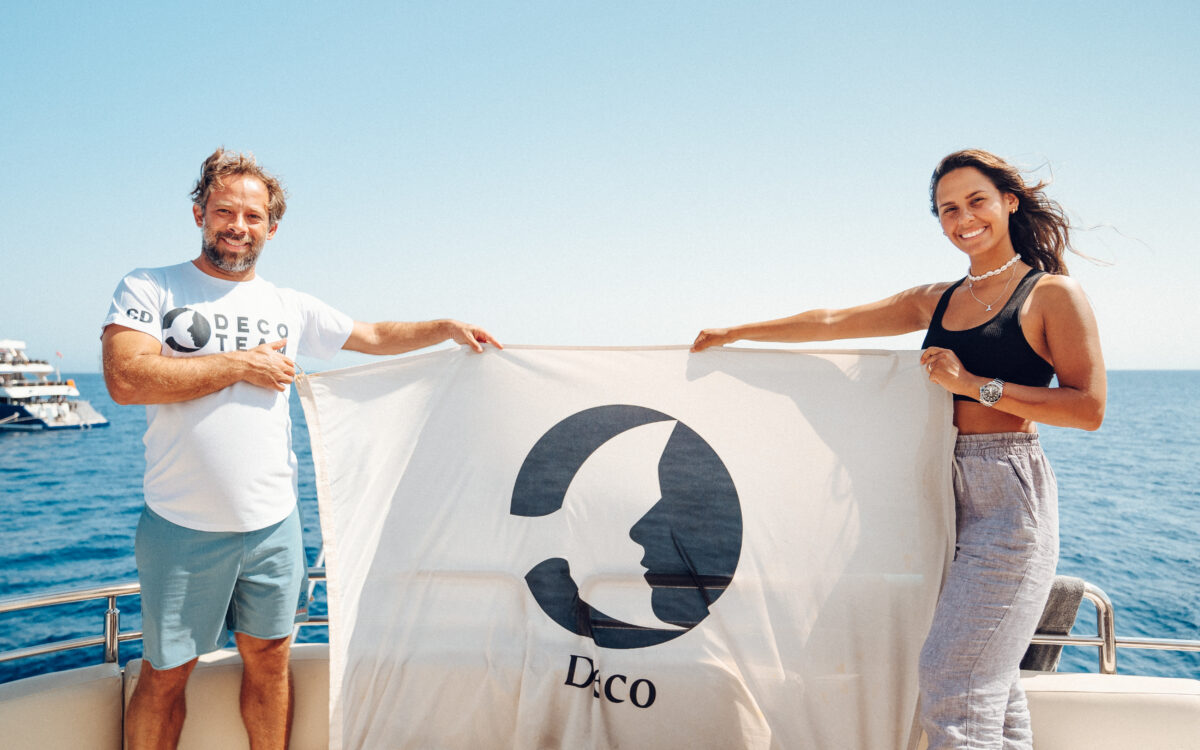
Sharky and I holding the Deco Divers flag. Photo by Ahmed Hadedy.
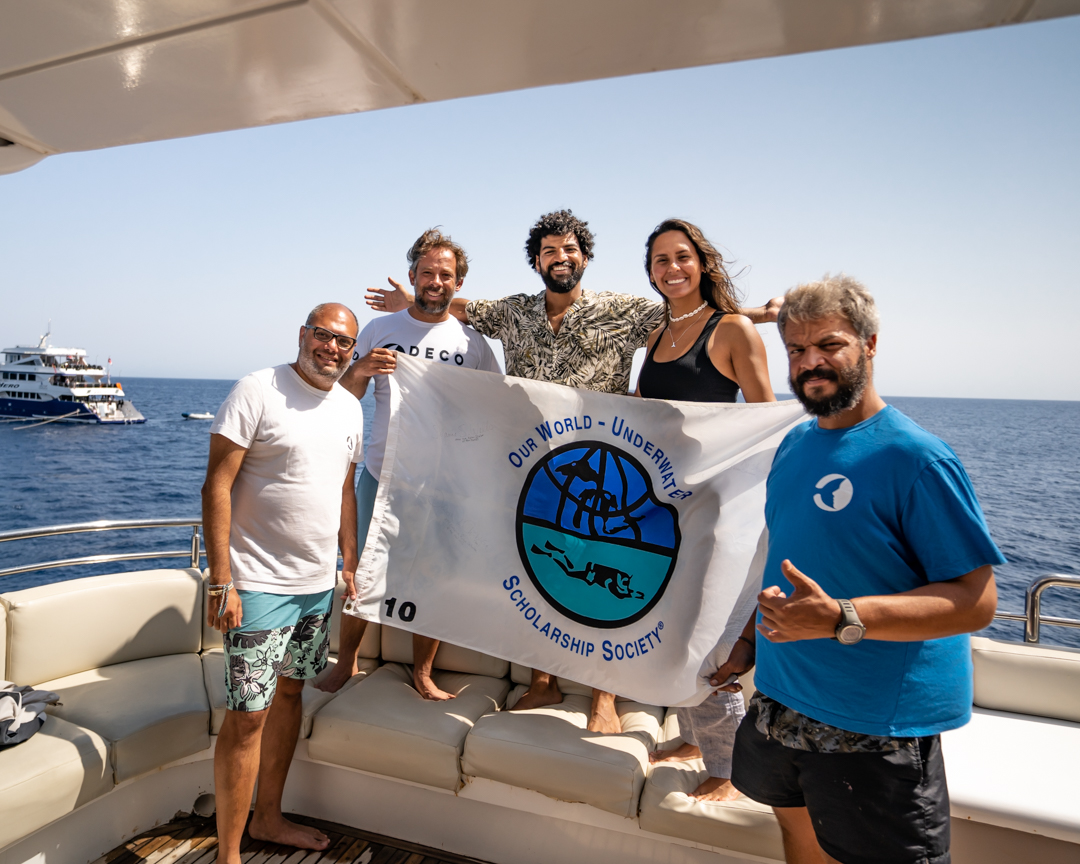
Ramy, Sharky, Hadedy, Omar and I proudly holding the OWUSS flag!
Thank you so much Ahmed Mamdouh and Deco Divers for having me onboard and sharing your knowledge of sharks and Egyptian Reef Life with me! I am grateful to the Our World Underwater Scholarship Society and Rolex for making adventures and learning opportunities like these possible! A big “thank you” also goes to Fourth Element, Reel Diving, Halcyon, Reef Photo & Video, Nauticam and Suunto for the fantastic equipment.

